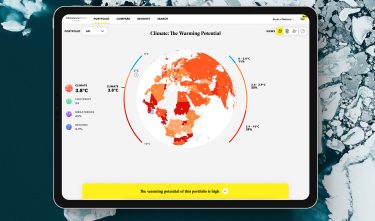For the first time, we presented a Dutch Design Award in the Data & Interaction category. A new name for a category that was previously known as Service & Systems. We picked this name because we wanted to clarify and sharpen what kind of work we are looking for and how we will evaluate that work as a jury.
Data has quite a bad reputation. Think of data, and you probably think of scandals, data breaches, hacked elections and banners that keep haunting you. Data is on your hard drive, in the cloud, and soon somewhere in the Zeewolde. Sometimes it belongs to you, sometimes to big tech, and sometimes to all of us. What is certain is that our world runs on data. The world’s most valuable companies have become so powerful precisely because they understand better than anyone how to profit from large datasets of personal information.
With the emergence of new technologies, we are always faced with the question of how we will relate to the opportunities these technologies offer us. Is everything that is possible also desirable? What guardrails do we put in place as a society? And how can we use the opportunities of technology to the benefit of people and nature? Technology is neutral, it’s up to us how we will use it. There is a new generation of designers rising who takes on this responsibility and carefully considers how we interact with data and technology.
During my studies, I learned about ‘human-machine interaction’. It was already clear ten that we as designers have an intermediary role to play between man and machine. With our research and design solutions, we seek to achieve harmonious cooperation. This also comes with a responsibility. It’s up to us to transform today’s opportunities into positive systems and experiences. It’s up to us to make technology work for people, not the other way around.
That is why it’s important that within the Dutch Design Awards – with many ‘traditional’ categories such as Fashion, Habitat and Product – there is a podium for designers of interactive installations and interfaces. Designers who handle large data sets, powerful algorithms and new interactive technology. Modern Da Vincis, who are visionary, engineer and craftsman, rolled into one. Or collectives that bring that together because, with such multidisciplinary work, the old-fashioned one-man-show is a thing of the past.
In her TED talk for example, Tanya Berger-Wolf shows us how a research group using AI is analyzing publicly available photos and videos to map wildlife populations. This collects essential data to protect endangered animal species.
Volvo is a good example of a company that takes its responsibility seriously, fully in line with its mission. For years, automakers have performed safety tests using only male test dummies. This means that the safety of cars is not optimized for the other half of the world’s population. Volvo, however, did us dummies of both genders, but decided not to turn this into a competitive advantage. The car brand instead published all test data open-source in the Volvo EVA initiative.
The winner of the first Data & Interaction – Dutch Design Award deserves attention: Clever Franke developed a digital platform for the Swiss private bank Globalance that provides insight into the global impact of investments. An interactive data visualization shows investors how to make a positive impact with the capital they invest. This open platform is accessible to all gives you transparent insight into the companies that contribute to the climate goals, and those who don’t.

Data is a powerful tool. The impact of large data sets, machine learning algorithms and their possible influence is hard to overestimate. In recent years, we have been confronted with examples that show how this power is used for financial gain. That’s why it’s now time for us to focus on examples that really add value for people, society and nature, and to follow that example. With the inaugural Data & Interaction category, we hope to do our part towards making that a reality.
Daniël Sytsma is chair of DDA category Data & Interaction